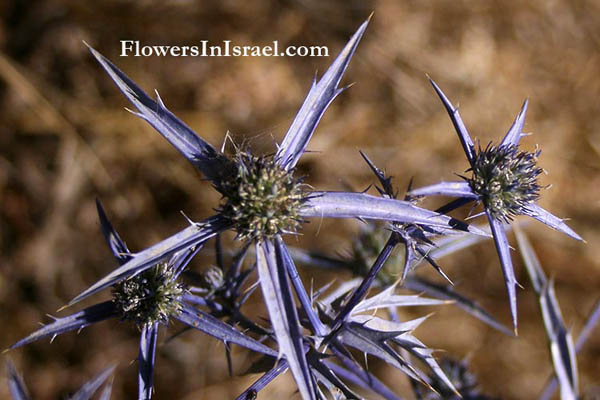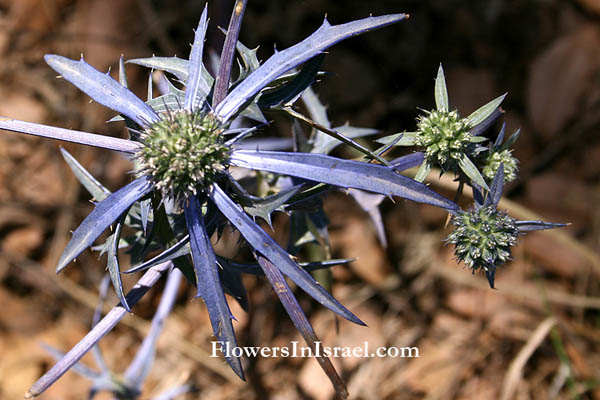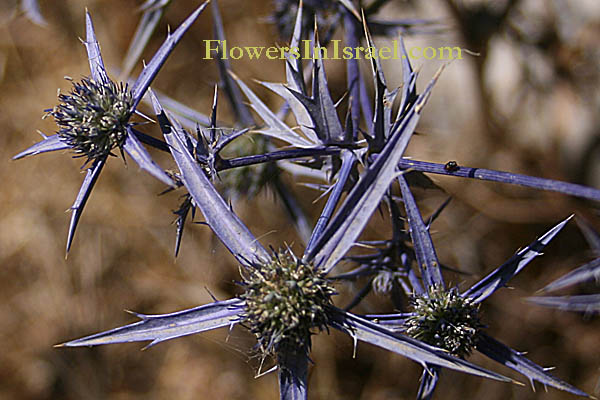Hebrew: חרחבינה מכחילה ,Arabic: قرصعنة
| Scientific name: | Eryngium creticum Lam. | |
| Common name: | Field Eryngo | |
| Hebrew name: | חרחבינה מכחילה | |
| Arabic name: | قرصعنة | |
| Plant Family: | Umbelliferae / Apiaceae, סוככים |

|
| Life form: | Hemicryptophyte | |
| Spinescence: | Leaves, bracts | |
| Stems: | 25-100 cm, erect, much-branched above | |
| Leaves: | Alternate, rosette, dissected once, spinescent | |
| Inflorescence: | Terminal, bluish, very diffuse; spreading, usually with 30-100 pedunculate, globose capitula | |
| Flowers: | Light blue, white, globose capitula; 5-7 bracts, linear-lanceolate, 3-cuspidate; sepals ovate, mucronate | |
| Fruits / pods: | Fruits elliptical to obovate; sparsely scaly, the scales not overlapping | |
| Flowering Period: | May, June, July, August | |
| Habitat: | Batha, Phrygana | |
| Distribution: | Mediterranean Woodlands and Shrublands, Semi-steppe shrublands, Shrub-steppes, Deserts and extreme deserts, Montane vegetation of Mt. Hermon | |
| Chorotype: | Mediterranean | |
| Summer shedding: | Ephemeral |

Derivation of the botanical name: Eryngium , eryo, "woolly", yopyovio^, Eryngium creticum: literally explaining: a "Gorgon-like plant," but without identifying it with any known plant. Theophrastus' name for a spiny-leaved plant (sea holly). creticum, from the island of Crete.
1. Chazeret. The Gemara identifies chazeret as chasah, the modern Hebrew word for lettuce, and there is little doubt that the Mishnaic chazeret is lettuce (Lactuca sativa), 2. Tamcha, whose specific identity is uncertain. 3. Charchevina. 4. Ulshin, translated as hindvei, is nearly universally understood to refer to endives. 5. Maror: merirta (Aramaic for maror), which seems to be Sonchus oleraceus. It is a common weed, widespread in gardens, fallow fields, and roadsides in Israel. See the list of Medicinal herbs in Israel, the parts used and their medical uses to treat various diseases. Stems of Eryngium creticum are used for anti-cough and kidney inflammation, so dried stems are boiled and its water is drunk. Eryngium creticum has been used in folk medicine in Jordan as a remedy for scorpion stings in the rural areas and as a hypoglycemic agent. (Jaghabir, M. Hypoglycemic effects of Eryngium creticum. Arch. Pharm. Res., 1991, 14 (4), 295-297). 
|